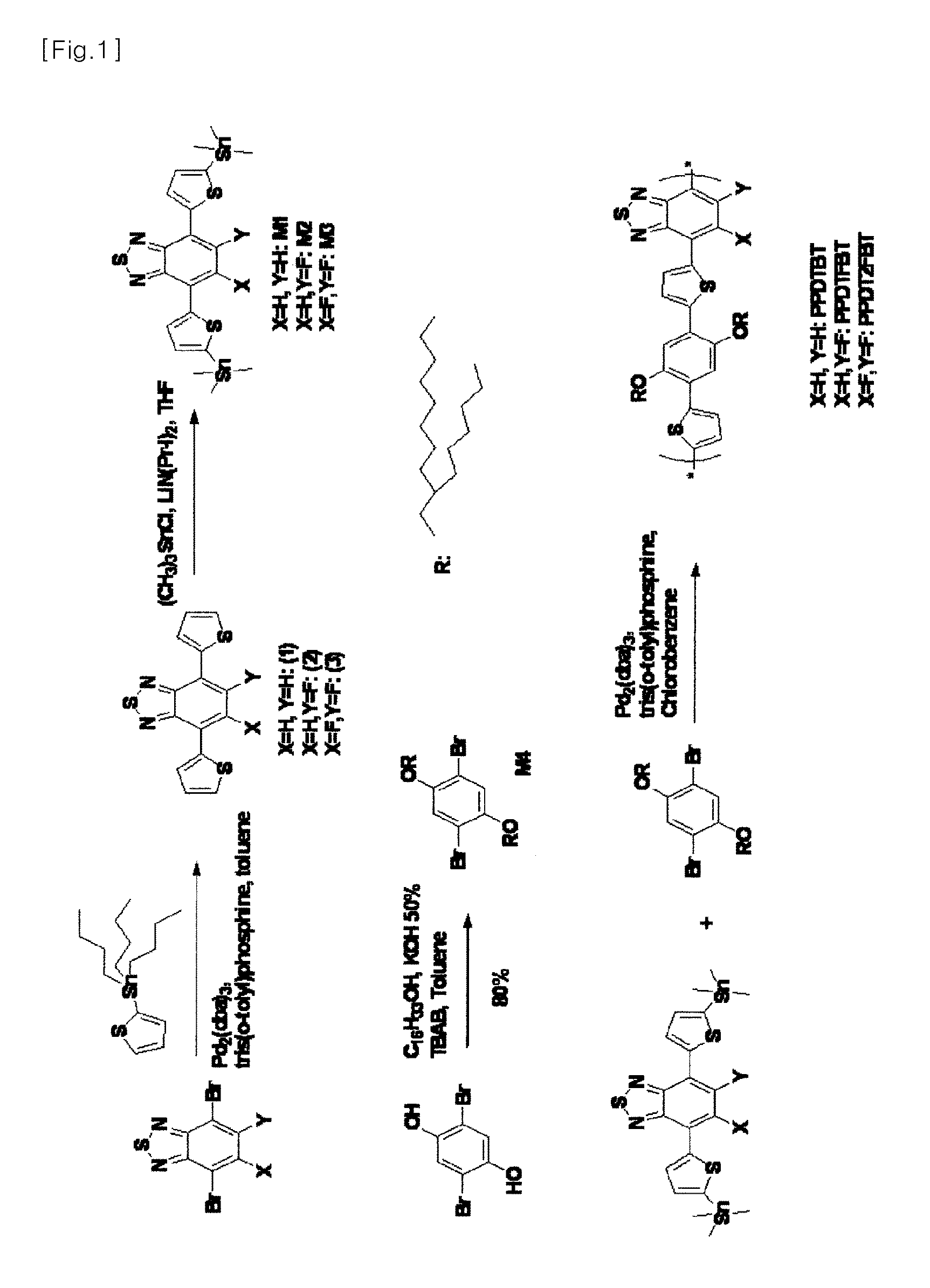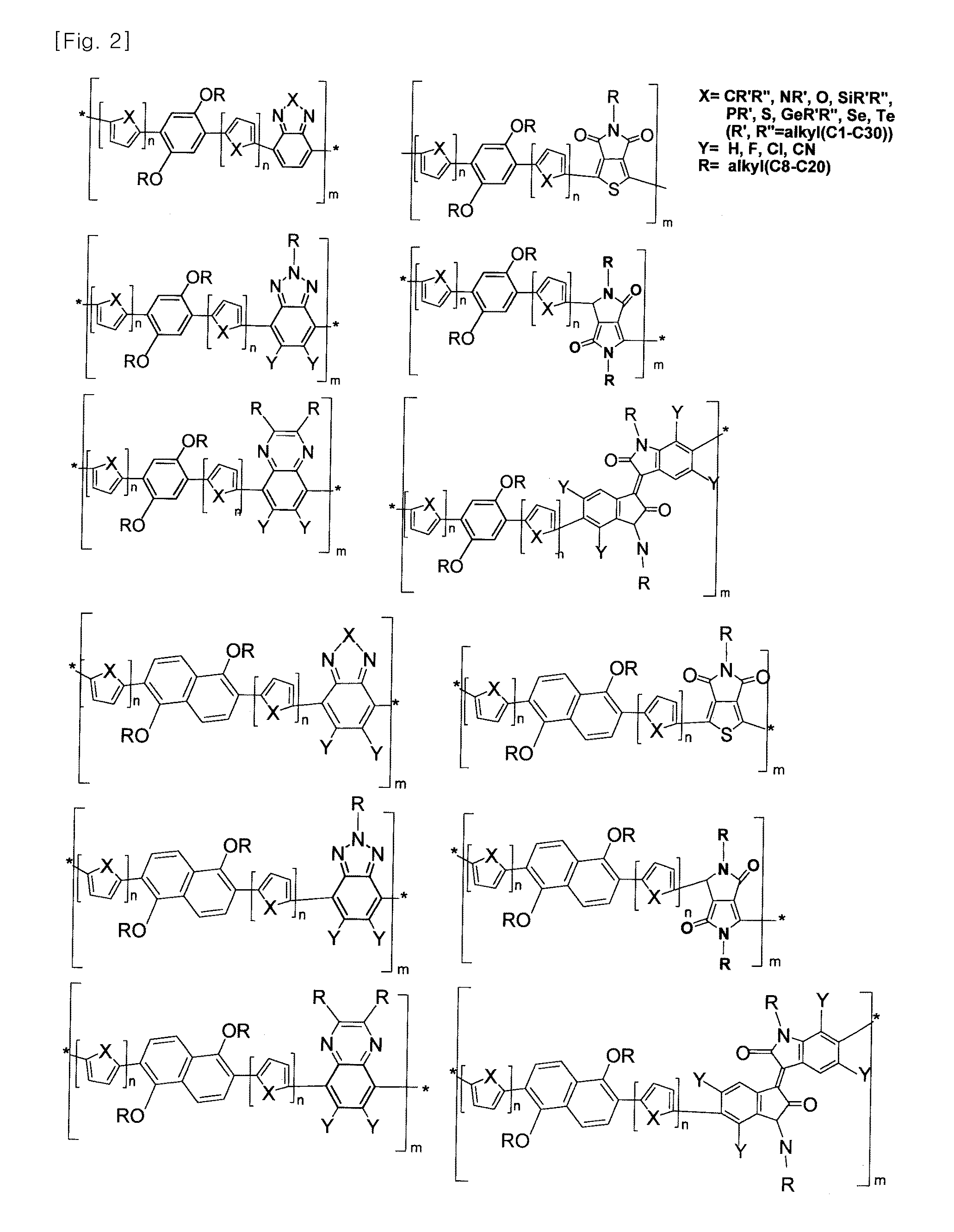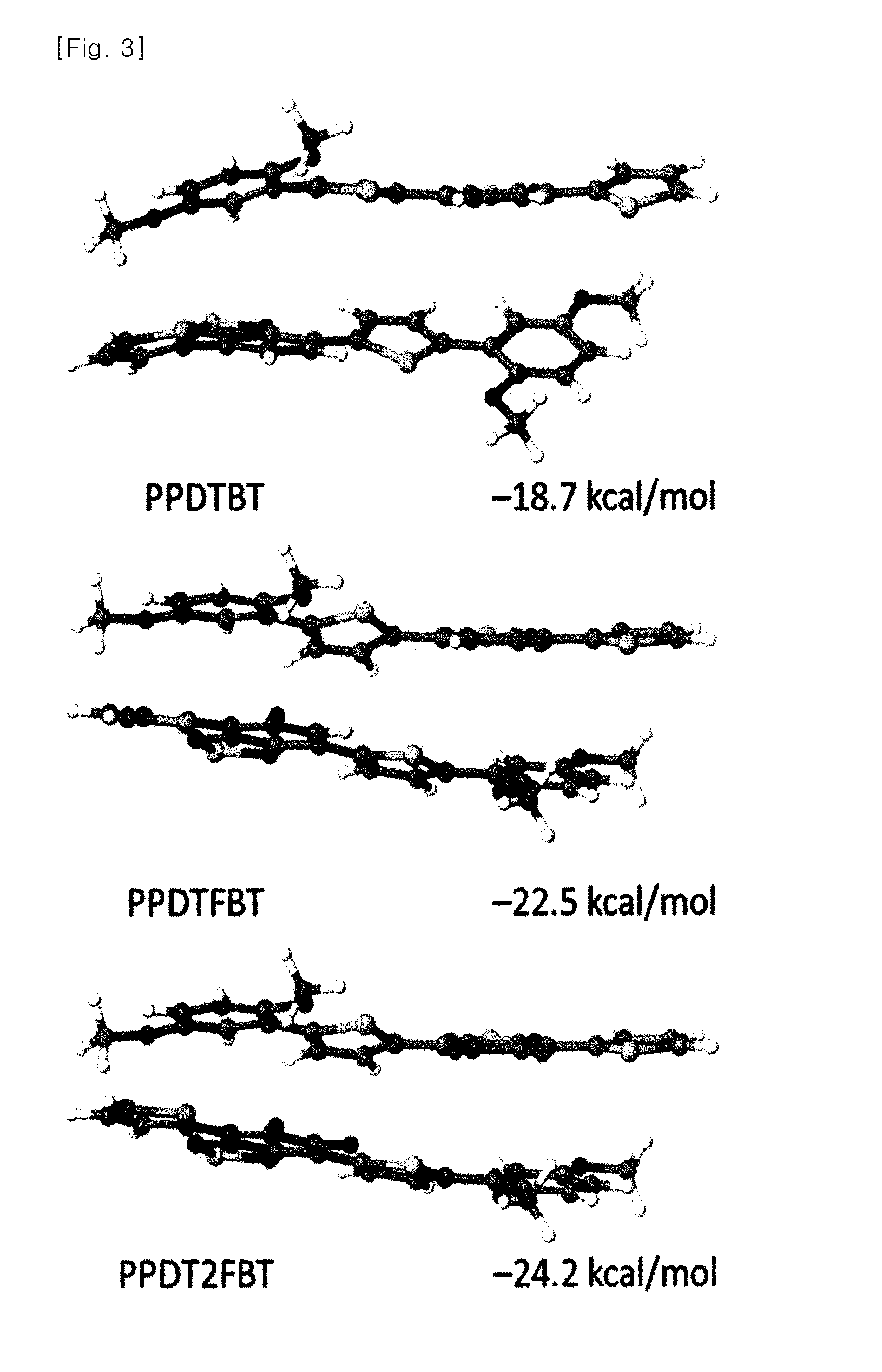Novel polymer material for hightly efficient organic thin-film solar cell, and organic thin-film solar cell using same
a solar cell and polymer technology, applied in the field of new polymer materials for high-efficiency organic thin-film solar cells, can solve the problems of second-generation thin-film solar cells, silicon (5), and first-generation crystalline solar cells, which generate electricity at 5 to 20 times higher cost, and achieve high hole mobility and power conversion efficiency, high power conversion efficiency, and high efficiency
- Summary
- Abstract
- Description
- Claims
- Application Information
AI Technical Summary
Benefits of technology
Problems solved by technology
Method used
Image
Examples
synthesis example 1
Synthesis of Precursors
[0079]5-Fluoro-4,7-di(thiophen-2-yl)-2,1,3-benzothiadiazole and 5,6-difluoro-4,7-di(thiophen-2-yl)-2,1,3-benzothiadiazole were synthesized as polymer precursors according to the procedures reported in the literature [Samuel C. Price, Andrew C. Stuart, Liquing Yang, Huaxing Zhou, and Wei You, J. Am. Soc. 2011, 133, 4625-4631; Huaxing Zhou, Liqiang Yang, Andrew C. stuart, Samuel C. Price, Shubin Liu, and Wei You, Angew. Chem. Int. Ed. 2011, 50, 2995-2998].
synthesis example 2
Synthesis of Polymers
4,7-Di(thiophen-2-yl)-2,1,3-benzothiadiazole (1)
[0080]4,7-Dibromo-2,1,3-benzothiadiazole (2 g, 6.8 mmol), 2-(tributylstannyl)thiophene (5.3 g, 2.1 eq.), 2 mol % of tris(dibenzylidene acetone)dipalladium (0)), and 8 mol % of tri(o-tolyl)phosphine were added in a 30 ml microwave vial. The vial was sealed and purged with nitrogen. 10 mL of anhydrous chlorobenzene was added to the vial. The reaction mixture was heated at 80° C. for 10 min and at 140° C. for 1 h in a microwave reactor. After the reaction was completed, the solvent was removed and the title compound (1) was purified by column chromatography (eluent: hexane / CHCl3=1 / 1).
[0081]Yield: 98%. 1H NMR (300 MHz, CDCl3): δ 8.03 (dd, J=3.60 Hz, J=0.83 Hz, 2H), 7.78 (s, 2H), 7.41 (dd, J=5.07 Hz, J=0.87 Hz, 2H), 7.14 (dd, J=3.63 Hz, J=5.06 Hz, 2H). 13CNMR (75 MHz, CDCl3): 152.76, 139.53, 128.43, 127.86, 127.31, 126.12, 126.07
5-Fluoro-4,7-di(thiophen-2-yl)-2,1,3-benzothiadiazole (2)
[0082]Yield: 95%. 1H NMR (300 MHz, ...
PUM
| Property | Measurement | Unit |
|---|---|---|
| Molar mass | aaaaa | aaaaa |
| Molar mass | aaaaa | aaaaa |
| Molecular weight | aaaaa | aaaaa |
Abstract
Description
Claims
Application Information
 Login to View More
Login to View More - R&D
- Intellectual Property
- Life Sciences
- Materials
- Tech Scout
- Unparalleled Data Quality
- Higher Quality Content
- 60% Fewer Hallucinations
Browse by: Latest US Patents, China's latest patents, Technical Efficacy Thesaurus, Application Domain, Technology Topic, Popular Technical Reports.
© 2025 PatSnap. All rights reserved.Legal|Privacy policy|Modern Slavery Act Transparency Statement|Sitemap|About US| Contact US: help@patsnap.com



